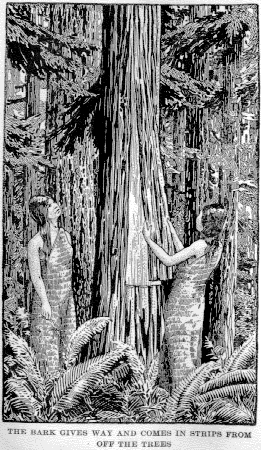Cedar bark textile

Cedar bark textile was used by indigenous people in the Pacific Northwest region of modern-day Canada and the United States. Historically, most items of clothing were made of this material. The name is confusing, as it is made from Thuja (redcedar) and cypress bark, not cedar bark; true cedars are not native to the Americas.
After the western redcedar or yellow cypress (often called "yellow cedar") bark was peeled in long strips from the trees, the outer layer was split away, and the flexible inner layer was shredded and processed. The resulting felted strips of bark were soft and could be plaited, sewn or woven into a variety of fabrics that were either dense and watertight, or soft and comfortable.[1]
Women wore skirts and capes of redcedar bark, while men wore long capes of cedar bark into which some mountain goat wool was woven for decorative effect.[2]
See also
References
- ↑ Emmons, George Thornton. The Tlingit Indians (Anthropological Papers of the American Museum of Natural History). p. 222.
- ↑ Stewart, Hilary. Cedar: Tree of Life to the Northwest Coast Indians. University of Washington Press. p. 150. ISBN 978-0295974484.


.svg.png)